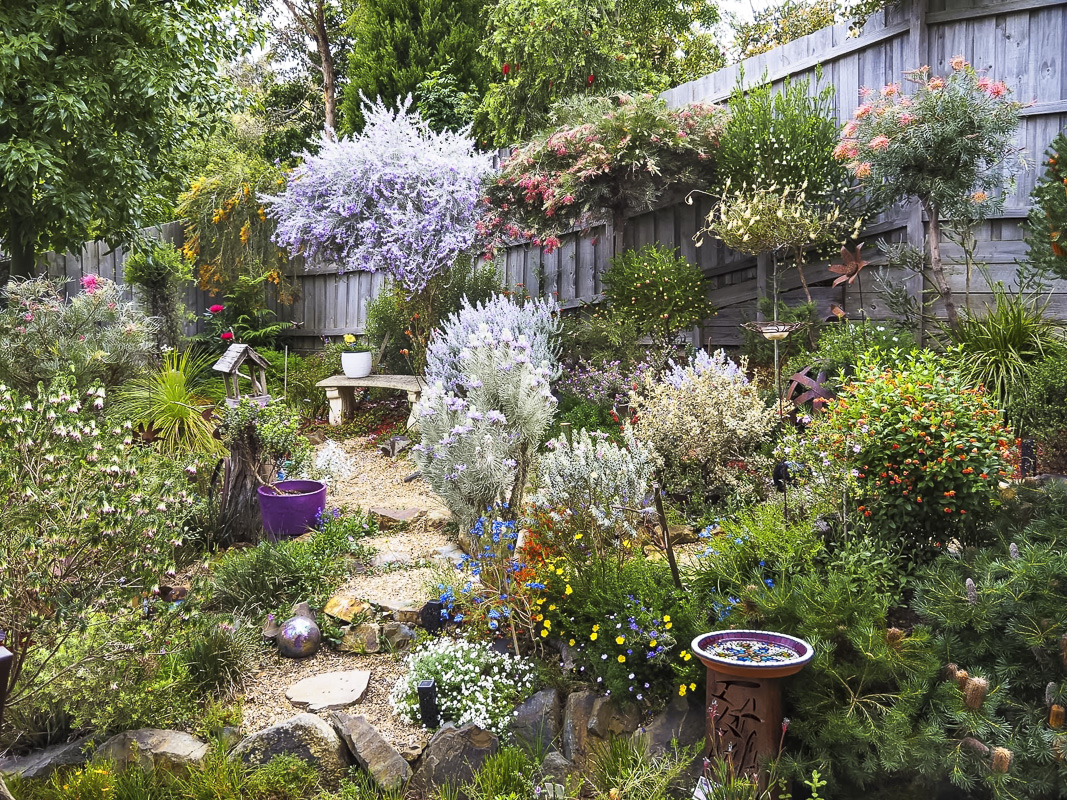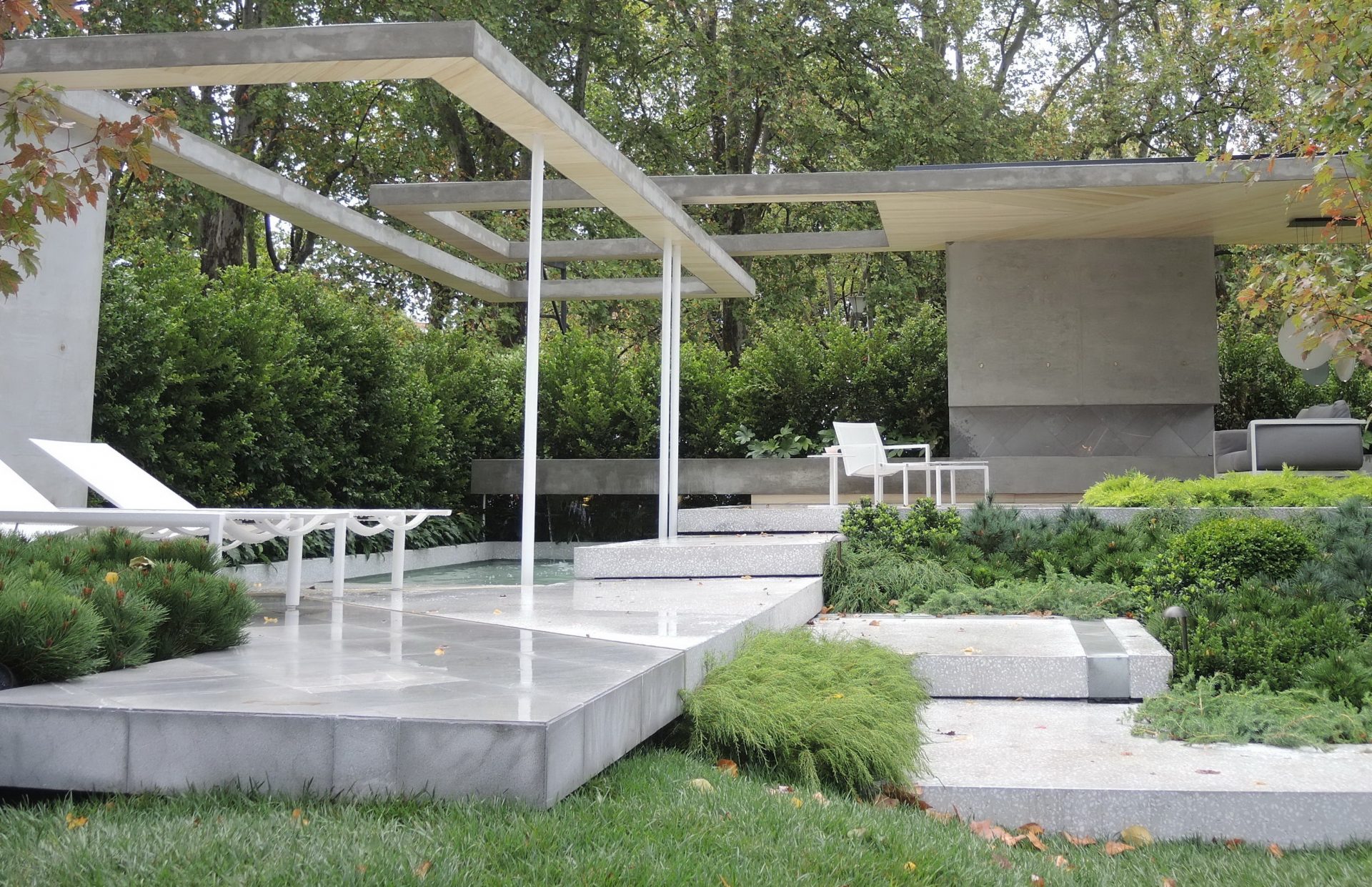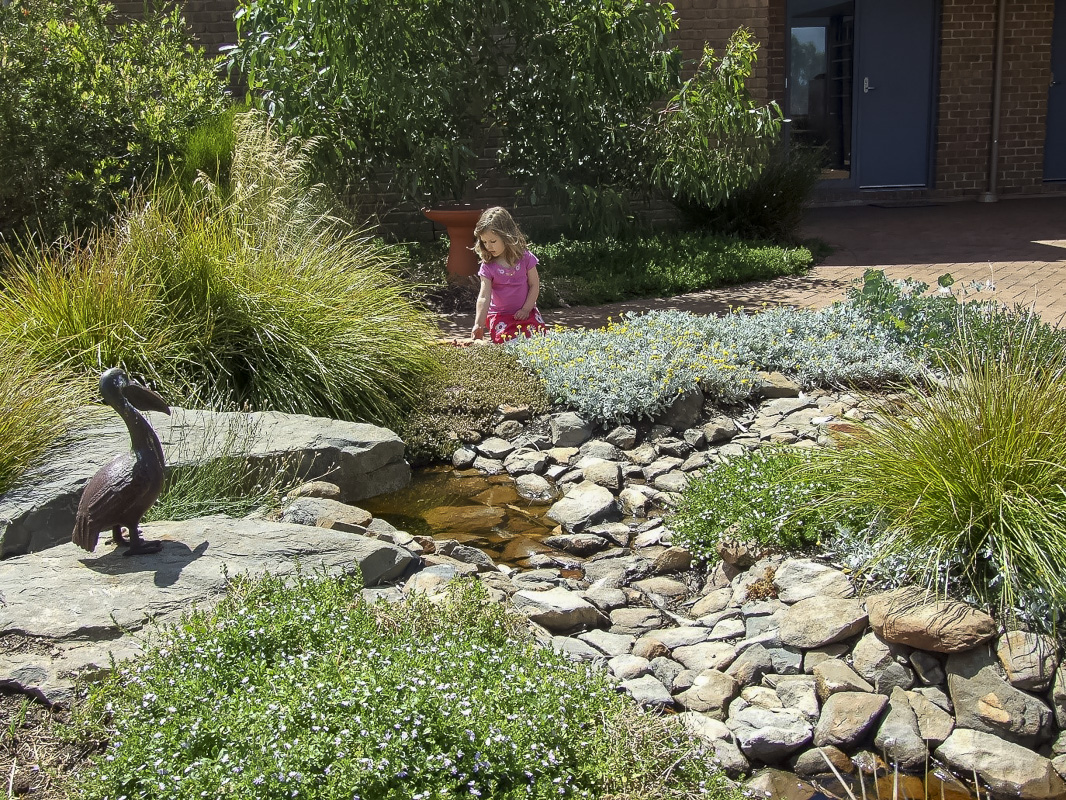With careful planning, you can create a peaceful and tranquil garden. Here are 10 tips to help create such a tranquil garden.
Today, many suburban ‘gardens’ are small and often just a patch of grass, planted with a few drought tolerant, exotic specimens. In such a space, it is difficult to relax, to be at peace and enjoy some tranquillity away from the distraction and stresses of everyday life.
Yet almost every garden can inspire peace and tranquillity.

A well designed garden creates a sense of peace and tranquility, image Deb McMillan
Benefits
A peaceful and tranquil garden has huge benefits:
- Simply being in a garden creates a feeling of timelessness
- A peaceful and tranquil garden generates a sense of well-being
- A diverse, densely planted, layered garden, offers mystery and surprise
- A well designed garden sets the mood from the first step into the garden and carries it through with a variety of sensory experiences – visual attraction, colours, textures, sounds, aromas, movement and change over time.
Elements of successful design
What design elements engender emotion in a garden and create a sense of peace and tranquility?
The key is overall simplicity of the layout. This applies to the physical forms and the use of a limited colour palette in both construction materials and plants.
Here are 10 tips to create a tranquil garden.
Repetition and continuity
Tip 1: Repetition in the garden gives a sense of cohesion — an essential ingredient to keep the garden ‘calm’.

Repetition of planting in Fiona Johnson’s garden, image Fiona Johnson
Tip 2: Continuity of ‘hard landscape’ is important. Avoid mixing unrelated construction materials, preferably use natural weathered rock, timbers, even old brick.

Continuity of landscape materials, image Lawrie Smith
Creating spaces and habitats
Tip 3: Be inspired by the local landscape and plan the garden to provide a habitat for wildlife. This shares a natural sanctuary, and offers a place to experience a close connection with the natural world.
Tip 4: A vital part of a cool and peaceful garden are places to sit. Choose places in the sun and shade, to rest or read a book in silence without feeling watched or interrupted.
Tip 5: The sounds of running water is one of the most calming effects. It filters unwanted noise, the soft patter of raindrops on a pond, or the dancing reflections of light.

The sound of running water creates a calming effect, Aitcheson garden, Melbourne
Light and colour
Tip 6: Dappled light sparkles through shimmering leaves. Golden light highlights plant forms and textures; aromas waft from hidden flowers; each gives a sense of peacefulness.
Tip 7: Colour is the most significant contributor to the overall aesthetic of the garden. Green is the ultimate colour to relax mind and body. It is a simple palette of many tones.
Tip 8: Minimising multicolour effects creates calm. Subtle dashes of colour through greens enhance rather than overpower.

Greens and grey greens with a pop of colour is calming, image Heather Miles
Tip 9: Dark colours such as blue, mauve and purple create a calming and serene atmosphere. They create a cool effect even in extreme heat. Complementary colours produce a feeling of tranquillity and harmony.
Points of interest
Tip 10: Garden art, formal or informal, sculptural rocks or interesting artefacts provide focus and interest. They enhance opportunities for relaxation, interest and contemplation.

Sculpture and art create visual focus and interest, Baghurst garden
 Australian Native Plants Society (Australia)
Australian Native Plants Society (Australia)